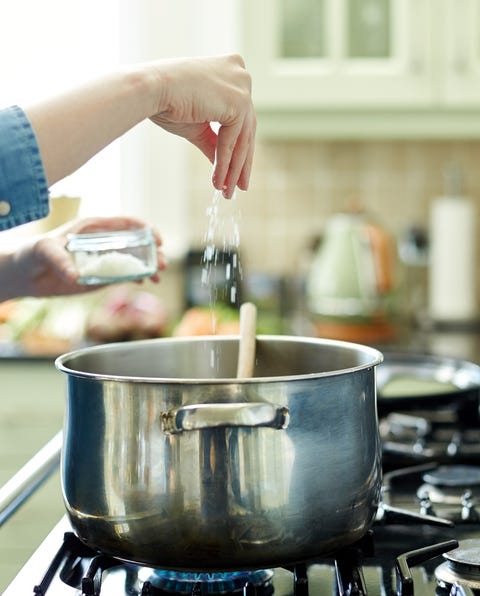Sodium is an essential mineral your body needs to maintain fluid balance and normal nerve and muscle function. This is referred to as the Adequate Intake AI.
How To Stay In The Sodium Safe Zone Harvard Health
This is referred to the Tolerable Upper Intake Level UL.

Sodium per day female. The American Heart Association recommends no more than 2300 milligrams mg a day and moving toward an ideal limit of no more than 1500 mg per day for most adults. The Dietary Guidelines for Americans recommends limiting sodium to less than 2300 mg a day. Tolerable Upper Level Intake For those who consume closer to the average daily intake of more than 3400 milligrams of sodium per day cutting consumption to 1500 milligrams seems like a daunting task.
If you have high blood pressure or prehypertension limiting sodium intake to 1500 mg per day about 23 teaspoon of salt may be helpful. Because the average American eats so much excess sodium even cutting back by 1000 milligrams a day can significantly improve blood pressure and heart health. Adequate intake for adults is 1500 mg sodium per day.
One cup of packaged pancake mix contains 2036 milligrams of sodium. That is about 1 teaspoon of salt and includes sodium added during manufacturing or cooking as well as at the table when eating. Women ages 14 to 50 should consume 1500 milligrams a day women ages 51 to 70 need 1300 milligrams and women over 70 require 1200 milligrams.
As a healthy adult woman you can safely consume as much as 2300 milligrams of sodium each day. On average you need to replenish 230 to 920mg of sodium per pound of sweat lost during your workout and aim to get between 500mg to 2300mg of sodium per day. Approximately 77 percent of sodium in the American diet comes from processed and restaurant foods and some foods contain almost an entire days worth of sodium.
Women 51 and older should reduce their sodium intake to 2300 mg each day. Median sodium levels were 2850 for men and 2320 for women. These women are at.
Daily Sodium Allowance for Women Daily Allowance. People aged 14 and over should not eat more than 2300 mg sodium per day. 1 to 3 years should eat no more than 2g salt a day 08g sodium 4 to 6 years should eat no more than 3g salt a day 12g sodium 7 to 10 years should eat no more than 5g salt a day 2g sodium.
Check the nutrition facts label on the foods you eat. The WHO suggests consuming 2000 mg 2 grams of sodium per day and the American Heart Association advises a much lower intake of 1500 mg 15 grams per day 16 17. Sodium Recommendations Adult females over the age of 60 years should limit their sodium intake to no more than 1500 milligrams per day.
Keep in mind that these are upper limits and less is usually best especially if youre sensitive to the effects of sodium. Three ounces of ham contain 1114 milligrams of sodium and 3 ounces of canned shrimp contain 1955 milligrams. The National Heart Lung and Blood Institute claims that if you are a healthy adult your recommended daily amount of sodium intake should be 2300 mg.
No significant relationship was found between sodium intake and mortality or the development. The Daily Value for sodium is less than 2300 milligrams mg per day. The American Heart Association AHA recommends that the daily sodium intake for all Americans should ideally be less than 1500 mg per day and no more than.
Chan School of Public Health. Sodium is listed by grams and as a. Adults should eat no more than 6g of salt a day 24g sodium thats around 1 teaspoon.
Use Daily Value DV as a tool. The DV is the percentage of the Daily Value for each nutrient in a serving of the food and. The Centers for Disease Control estimates the average American eats more than 3400mg per day but the official federal Dietary Guidelines recommend eating.
On the other hand if you are suffering from a chronic health condition such as hypertension diabetes or kidney disease you should consume around 1500 mg of sodium each day. However you only need about 500 milligrams of sodium a day to support these normal body functions according to the Harvard TH. It is recommended that people over the age of one year eat between 1000-1500 mg sodium per day.
From fast food to potato chips most Americans get well beyond the required amount of sodium per day. NNR 2012 a limitation of sodium intake to about 24 gd corresponding to about 6 g salt NaCl is feasible at the population level There is a lack of evidence to suggest that sodium requirements during pregnancy and lactation differ significantly from that of non-pregnant women.




